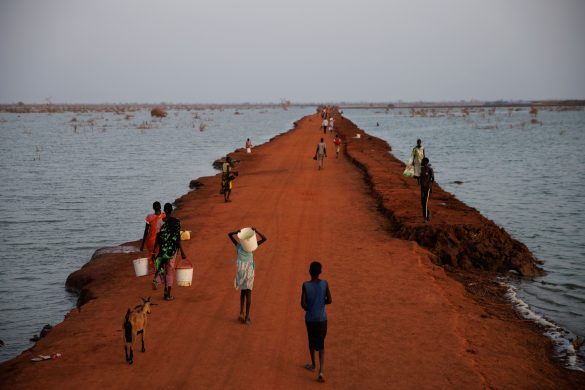Et nyt projekt skal beskytte og genskabe en af verdens artsrigeste, men også mest truede regnskove, skriver den tyske naturfredningsforening (NABU) på sin website.
It gives hope for many endangered animal and plant species (arter), such as Sumatran Tiger, Asian Elephant, Malayan Tapir, Ironwood (jerntræ) and Storm`s Stork (se http://harapanrainforest.org/storms-stork) as well as to the communities who depend on the forest for their livelihoods.
(Sumatra Tigeren er den mindste af verdens tigerarter, og der er kun få hundrede tilbage i naturen – heraf omkring 15 eksemplarer i Harapan-regnskoven, som i alt anslås at huse 55 slags pattedyr)
With more than 7,5 million euros, the German Ministry of Environment (BMU) is supporting, via KfW Development Bank, the conservation of Harapan Rainforest, a 1.000 square kilometer area (næsten så stort som Lolland) in the provinces of South Sumatra and Jambi, also on the Indonesian island of Sumatra.
The project is part of the BMU’s International Climate Initiative. It enables the Indonesian foundation Yayasan KEHI to restore degenerated habitats and to conserve the species-rich forest as part of a new partnership with the German nature conservation organisation NABU and its British BirdLife partner, the Royal Society for the Protection of Birds (RSPB).
The Harapan-Project intends to save one of the last untouched rainforests that is home to thousands of birds and other animal species.
– Harapan Rainforest is Indonesia’s first area under a new type of forest management for ecosystem restoration, said NABU’s President Olaf Tschimpke
– With this new type of forestry licence there is now the possibility to conserve one of the most species rich forests on Earth and its inhabitants as well as to contribute to the protection of our climate. This project could also be a model for other countries, Tschimpke added.
WITHOUT any forest conservation billions of tons of CO2 would be emitted
Indonesia holds about ten percent (90 million hectares) of the world’s remaining tropical rainforests. Two thirds of these are classified as production forest.
Under a business as usual scenario, the Indonesian government estimates that around 14 millions of hectares of forest could be lost or heavily damaged within the next 20 years, which would result in the emission (udledning) of 2,8 billion tons of harmful carbon dioxide (CO2) into the atmosphere.
Læs videre på
http://www.nabu.de/en/themen/international/laender/indonesien/harapan/index.html
Begynd fra „The new type of forestry licence…‟














